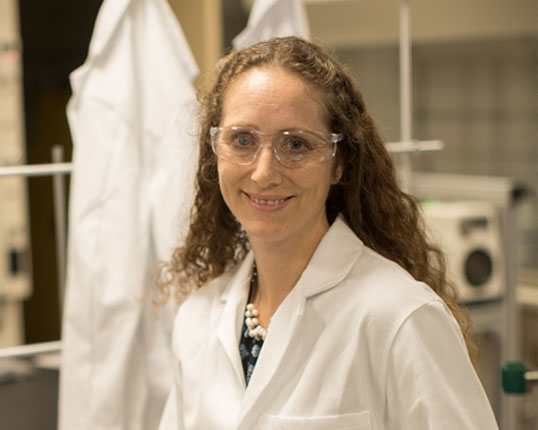“We want to use the sun to drive chemical reactions and form useful products, rather than do what we do now [to produce electricity], which is burn a lot of fossil fuels to heat up the reaction,” Young explains. “The heat is what drives the reaction. Can we instead do everything directly with light?”
Today’s solar panels use light from the sun to produce electricity, but they are expensive to make. The solar cells within these panels typically are made of silicon, an element that requires quite a bit of energy to process into efficient solar cells. Due to its extensive use in the development of computer devices, silicon is also in high demand.
“If we want to deploy [solar energy] on a much larger scale, we want to use materials to make the solar cells that are either more abundant or cheaper, and are less energy-intensive to fabricate into efficient solar cells,” Young says.
She and her team focus on organic molecules called chromophores or dyes, such as the chlorophyll found in plants, as well as inorganic materials, as possible alternatives to silicon solar cells.
When a molecule or material absorbs light, the electrons within the molecule become excited—they absorb this extra energy and, with that energy, have the potential to do a useful reaction. Young and her team track what the electrons do, what path they take and how quickly they move. To do so, they use an advanced laser technique for which its creators, France’s Gérard Mourou and Canada’s Donna Strickland, won the 2018 Nobel Prize in physics.
The Young Lab’s ultra-fast laser system acts as a mini-sun, directing strong but short laser pulses, 100 femtoseconds in duration (a femtosecond is one millionth of a billionth of a second), at a sample of molecules or materials to start a reaction. The team then uses a second laser pulse to examine that reaction. They image the laser light with a detector that can process and show them the types of light the molecule absorbs and how that absorption changes during the course of a reaction initiated by the laser pulse.
“If a molecule absorbs red light, we can see that. If a molecule absorbs blue or green light, we can see that. As chemists, we can know if a reaction happens a certain way and these products are formed, they have this absorption spectrum, and if a different reaction occurs, other products are formed, and they have a different absorption spectrum,” says Young.
This understanding, she says, can help researchers identify alternative molecules and materials that can improve the capture and generation of solar energy, as well as understand and develop more eco-friendly approaches to creating feedstocks like hydrogen or carbon monoxide, which are used to create chemical fuels.
Another potential application of this work could be the painting or printing of organic chromophore molecules on a material or a device, such as a t-shirt or a tent, to collect energy from the sun in a more portable approach to solar energy.
“Solar cells don’t have to be these heavy, rigid things like the silicon solar cells we see these days,” Young explains. “[Dyes] would be cheaper starting products. Processing might be easier [and] not as dependent on making the perfect crystalline silicon … You can fabricate solar cells on flexible substrates, which might be attractive for transportable sources of solar energy.”
Young says scientists have been interested in this difficult challenge for a long time. If successful, it will be worth the wait: “It would be life-changing,” she says.






